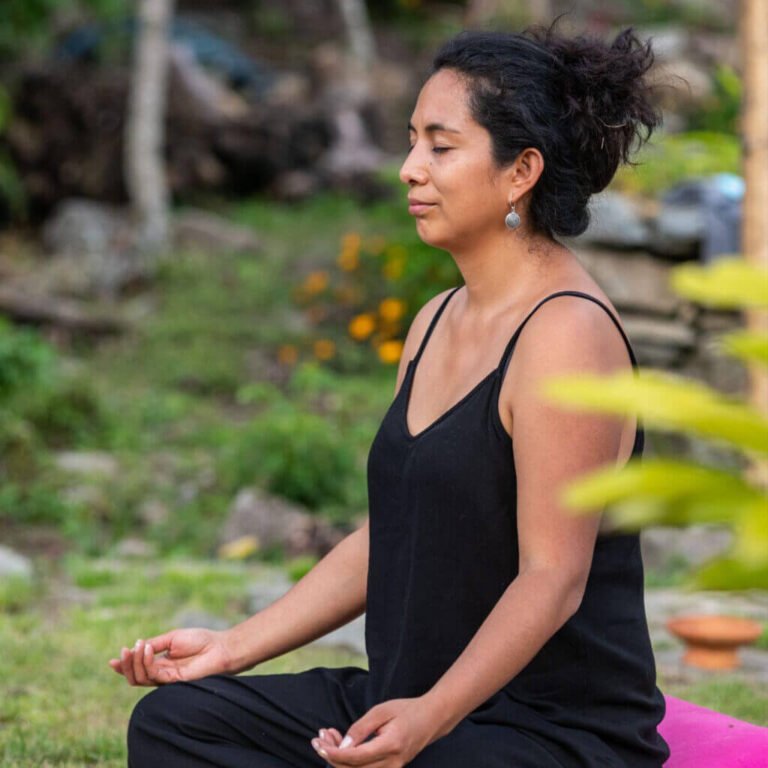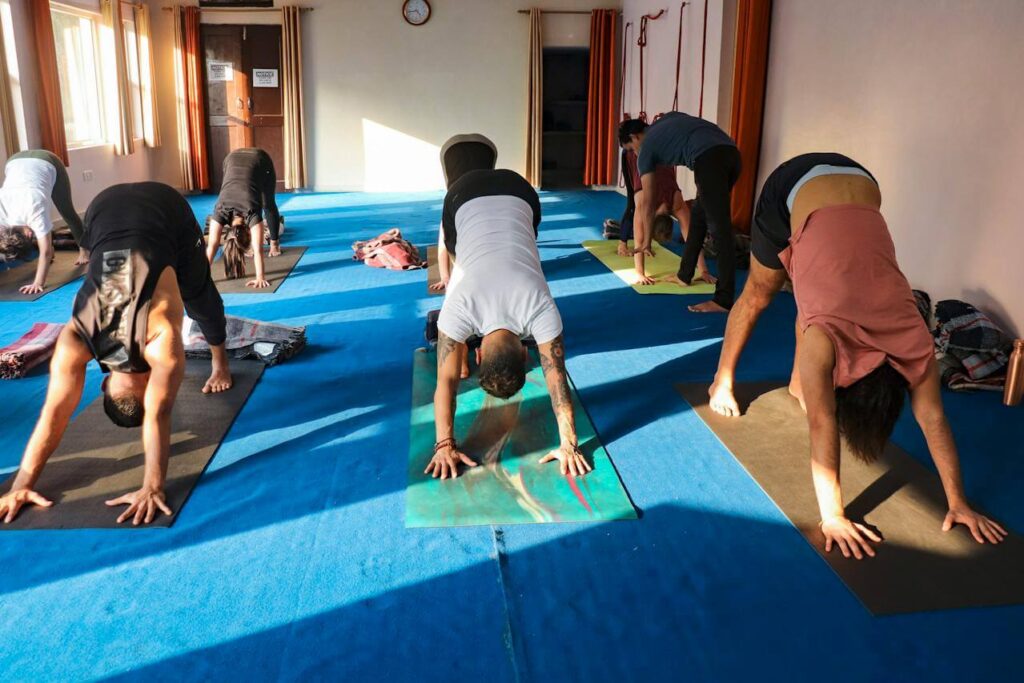Explore the enriching world of Kundalini Yoga through workshops and retreats. Discover how to find the right program, what to expect during a retreat, and tips on continuing your practice. Perfect for enhancing your spiritual and physical well-being.
Introduction to Kundalini Yoga
Definition and Origins of Kundalini Yoga
Kundalini Yoga, often called the “yoga of awareness,” uniquely focuses on awakening the Kundalini energy believed to lie dormant at the base of the spine. This form of yoga combines postures, breathing techniques, meditation, and the chanting of mantras to enhance spiritual growth and physical wellbeing. Originating from ancient India, Yogi Bhajan introduced Kundalini Yoga to the Western world in the late 1960s, aiming to offer a spiritual path to a broader audience.
Key Principles and Goals
The primary goal of Kundalini Yoga is to awaken the Kundalini energy, which enables practitioners to achieve an elevated state of consciousness. This practice emphasizes self-awareness and delivering an experience of your highest consciousness. The fundamental principles involve:
- Regular practice of kriyas — specific sequences of movements combined with breathing techniques.
- Devotion to the practice is seen as exercise and a spiritual ritual.
- Commitment to personal growth and ethical living.
The Significance of Kundalini Energy in Yogic Philosophy
In yogic philosophy, Kundalini’s energy is often visualized as a coiled serpent at the base of the spine. Awakening this energy is believed to unleash potential spiritual power and enlightenment. Kundalini Yoga teaches that this energy ascends through the chakras, or energy centers in the body, culminating in the seventh chakra, Sahasrara, located at the crown of the head. The process is said to illuminate the practitioner’s mind, leading to spiritual breakthroughs and a profound sense of harmony with the universe.
The Foundations of Kundalini Yoga
Understanding the Chakras and Their Roles
Kundalini Yoga emphasizes the chakras, vital energy centers within the body. Each of the seven main chakras corresponds to different physical, emotional, and spiritual health aspects. Through Kundalini Yoga, one aims to balance these chakras, thereby enhancing life force energy and facilitating a smoother flow of this energy throughout the body.
The Importance of the Breath (Pranayama)
Breath, or pranayama, is fundamental in Kundalini Yoga. It powers the practice by controlling the energy flow and activating the Kundalini energy. Techniques like “Breath of Fire” or gentle “Long Deep Breathing” help regulate the body’s energy flow and maintain the balance of the chakras, leading to greater mental clarity and physical vitality.
Mudras and Mantras: Enhancing Your Practice
- Mudras are hand gestures used during meditation and postures to direct energy flow and reflexes to the brain. Each mudra has a specific purpose and benefits, such as increasing concentration or enhancing meditation.
- Mantras: Chanting mantras is integral to Kundalini Yoga. These sacred sounds or phrases are powerful tools that help clear the mind, focus the consciousness, and connect the individual to the divine. Mantras can be a significant energy source in Kundalini practice, often guiding the transformation and expansion of spiritual power and enhancing the overall practice. Learn more.
Core Practices in Kundalini Yoga
Kriyas: Sequences and Their Benefits
- Definition and Importance: In Kundalini Yoga, kriyas refer to postures, breathing techniques, and sounds performed to achieve a specific outcome. Practicing kriyas initiates physical and mental changes that affect the body, mind, and spirit.
- Examples and Effects: Common kriyas may include the Kundalini Yoga Spinal Series, which enhances spinal flexibility and boosts circulation. Another is the Kriya for Balancing the Aura, which helps strengthen your energy field and improve confidence and wellbeing.
- Long-term Benefits: Regular practice of these kriyas enhances digestion, boosts energy levels, reduces stress, and supports the immune system.
Common Kundalini Yoga Poses and Their Impacts
- Frog Pose: Known for improving circulation and strengthening the legs, Frog Pose also energizes the body and can help with weight management.
- Sat Kriya: A fundamental pose in Kundalini Yoga, Sat Kriya focuses on the core and the respiratory system, promoting digestive health and mental clarity.
- Archer Pose: This pose is excellent for building confidence and courage. It also stretches the thighs and improves concentration.
The Role of Meditation in Kundalini Yoga
- Daily Practice: Meditation is central to Kundalini Yoga, often integrated into kriyas or done as a standalone practice. It helps to quiet the mind and awaken the dormant Kundalini energy at the base of the spine.
- Techniques include chanting mantras, focusing on breath, and visualizing the chakras. Each method helps to guide the practitioner to a state of higher consciousness and inner peace.
- Benefits: Regular meditation improves emotional stability, mental clarity, and a more profound spiritual connection.
The Benefits of Kundalini Yoga
Physical and Mental Health Benefits
- Enhanced Flexibility and Strength: Kundalini Yoga poses and movements improve physical strength and flexibility, leading to better posture and reduced back pain.
- Stress Reduction: The breathing techniques (Pranayama) used in Kundalini Yoga are powerful tools for managing stress and anxiety. They help calm the mind and soothe the nervous system.
- Improved Brain Function: Regular practice can enhance cognitive functions, such as memory, attention span, and concentration.
Spiritual Growth and Self-awareness
- Connection with the Self: Kundalini Yoga promotes an inward journey that fosters a deeper connection with one’s inner self. This practice encourages self-awareness and the exploration of one’s spiritual nature.
- Awakening of Kundalini Energy: The ultimate goal of Kundalini Yoga is the awakening of the Kundalini energy. This awakening can lead to profound spiritual experiences and universal connectedness.
How Kundalini Yoga Differs from Other Yoga Practices
- Focus on Energy: Unlike other forms of yoga that primarily focus on physical postures and alignment, Kundalini Yoga prioritizes the movement of energy through the chakra system.
- Integrated Spiritual Practice: Kundalini Yoga includes a robust spiritual component using mantras, meditation, and rituals, which is less emphasized in other yoga disciplines.
- Holistic Approach: This form of yoga treats the practitioner’s body, mind, and spirit as interconnected, aiming to develop all three to enhance wellbeing and spiritual growth. Learn more.

Incorporating Kundalini Yoga into Your Daily Routine
Incorporating Kundalini Yoga into your daily routine can enhance your physical and mental wellness, providing a grounded start or a peaceful end to your day. Here’s how to seamlessly integrate this transformative practice into your daily life:
Tips for Beginners:
- Start Slowly: Begin with shorter sessions to acclimate your body and mind to the new practices.
- Consistency is Key: Aim for regular practice to build habit and familiarity, even if it’s just a few minutes each day.
- Use Guided Sessions: Initially, follow guided Kundalini Yoga videos or apps to ensure proper technique and understanding.
Creating a Conducive Environment for Practice:
- Dedicated Space: Set up a specific area in your home where you can practice undisturbed. This space should be clean, quiet, and comfortable.
- Inspirational Elements: Consider adding items that inspire tranquility, such as candles, incense, or soothing decor.
- Comfortable Gear: Invest in a good quality yoga mat and comfortable clothing for unrestricted movement.
Balancing Kundalini Yoga with Other Forms of Exercise:
- Complementary Activities: Combine Kundalini Yoga with cardiovascular exercises like walking or swimming for physical balance.
- Listen to Your Body: Adjust the intensity of your yoga practice based on your overall activity level and physical condition.
- Integration: Try incorporating yoga principles and breathwork into other fitness routines to enhance mindfulness and focus.
Advanced Kundalini Techniques and Practices
As you grow more comfortable and proficient in the basics of Kundalini Yoga, you may feel ready to delve into more advanced techniques and practices:
Exploring Deeper Meditation and Prolonged Kriyas:
- Extended Meditation Sessions: Gradually increase the duration of your meditations to deepen your mental clarity and spiritual insight.
- Advanced Kriyas: To challenge your body and mind, engage in more complex kriyas that involve longer holds and more intricate sequences.
The Path to Kundalini Awakening: What to Expect:
- Progressive Experiences: As you advance, you may experience greater sensitivity and energy flow through your chakras.
- Emotional Release: Be prepared for emotional upheavals as deep-seated energies are released—this is a natural part of the process.
Safety Tips and How to Avoid Common Pitfalls:
- Stay Grounded: Do not overdo practices; balance intense sessions with grounding activities.
- Seek Guidance: Continue to work with a knowledgeable instructor who can provide advice tailored to your advancing level.
- Listen to Your Body: Recognize the signs of overexertion and adjust your practice accordingly.
Kundalini Yoga Workshops and Retreats
Exploring Kundalini Yoga through workshops and retreats can enrich your practice and provide immersive learning experiences. Here’s how to make the most of these opportunities:
Finding the Right Program for You
- Research: Look for programs led by certified Kundalini Yoga instructors with positive reviews.
- Goals: Identify your goals—are you seeking spiritual growth, physical healing, or a community of like-minded individuals?
- Location and Duration: Consider the location and duration best for your schedule and budget.
What to Expect at a Kundalini Yoga Retreat
- Daily Practices: Expect multiple sessions focused on Kundalini Yoga techniques, including kriyas, meditation, and chanting.
- Community Interaction: Retreats often include group activities, shared meals, and the chance to connect with other participants.
- Holistic Health: Many retreats offer holistic health practices, such as ayurvedic meals and healing therapies.
How to Continue Your Practice After a Retreat
- Routine: Use your learned practices to establish a daily Kundalini Yoga routine at home.
- Continued Learning: Stay engaged by attending local classes or online sessions to maintain momentum.
- Community: Keep in touch with fellow retreat attendees to build a supportive network for encouragement and inspiration.

Final words
Kundalini Yoga offers a transformative journey through its unique blend of physical postures, meditative practices, and spiritual insights. Here’s a recap and encouragement for your continued exploration:
Recap of the Transformative Power of Kundalini Yoga
- Kundalini Yoga enhances physical strength, improves mental clarity, and fosters spiritual awakening.
- Its comprehensive approach integrates the body, mind, and spirit, promoting overall wellbeing.
Encouragement to Explore Kundalini Yoga Further
- Whether you’re a beginner or an experienced yogi, there is always more to discover in Kundalini Yoga. Challenge yourself to delve deeper into its practices and teachings.
- Consider the profound impact consistent practice can have on your life and wellbeing.
Resources and Further Reading for Interested Readers
- Books: Look for titles like Kundalini Yoga: The Flow of Eternal Power by Shakti Parwha Kaur Khalsa for foundational knowledge.
- Online Resources: Websites like the Kundalini Research Institute offer courses, certifications, and extensive articles.
- Community Groups: Join online forums and local groups where practitioners share experiences and advice.
- Enlightenment Awaits Ome’s Premier Ayahuasca Retreat in the USA. Learn more.
- 7 Best Ayahuasca Retreats in America (Updated 2024). Learn more.
- Explore OME’s Spiritual Healing & Ayahuasca Retreats in California. Learn more.
- Welcome to OME’s Spiritual Healing & Ayahuasca Retreats in Georgia. Learn more.
- Discover OME’s Ayahuasca Retreats in Atlanta, GA. Learn more.
- Join Our Ayahuasca Retreats in Texas. Learn more.
- Join Our Ayahuasca Retreats in Florida. Learn more.
- Join Our Ayahuasca Retreats in Rhode Island, USA. Learn more.
- Join Our Ayahuasca Retreats in Maryland. Learn more.
- Join Our Ayahuasca Retreats in Delaware. Learn more.
- Join Our Ayahuasca Retreats in Connecticut, USA. Learn more.
- 7 Best Ayahuasca Retreats in America (Updated 2024). Learn more.
- Join Our Ayahuasca Retreats in Massachusetts, USA. Learn more.
- Discover OME’s Ayahuasca Retreats in New Jersey. Learn more.
- Join Our Ayahuasca Retreats in New Hampshire, USA. Learn more.
- Join Our Ayahuasca Retreats in Pennsylvania, USA. Learn more.
- Join Our Ayahuasca Retreats in New York. Learn more.



